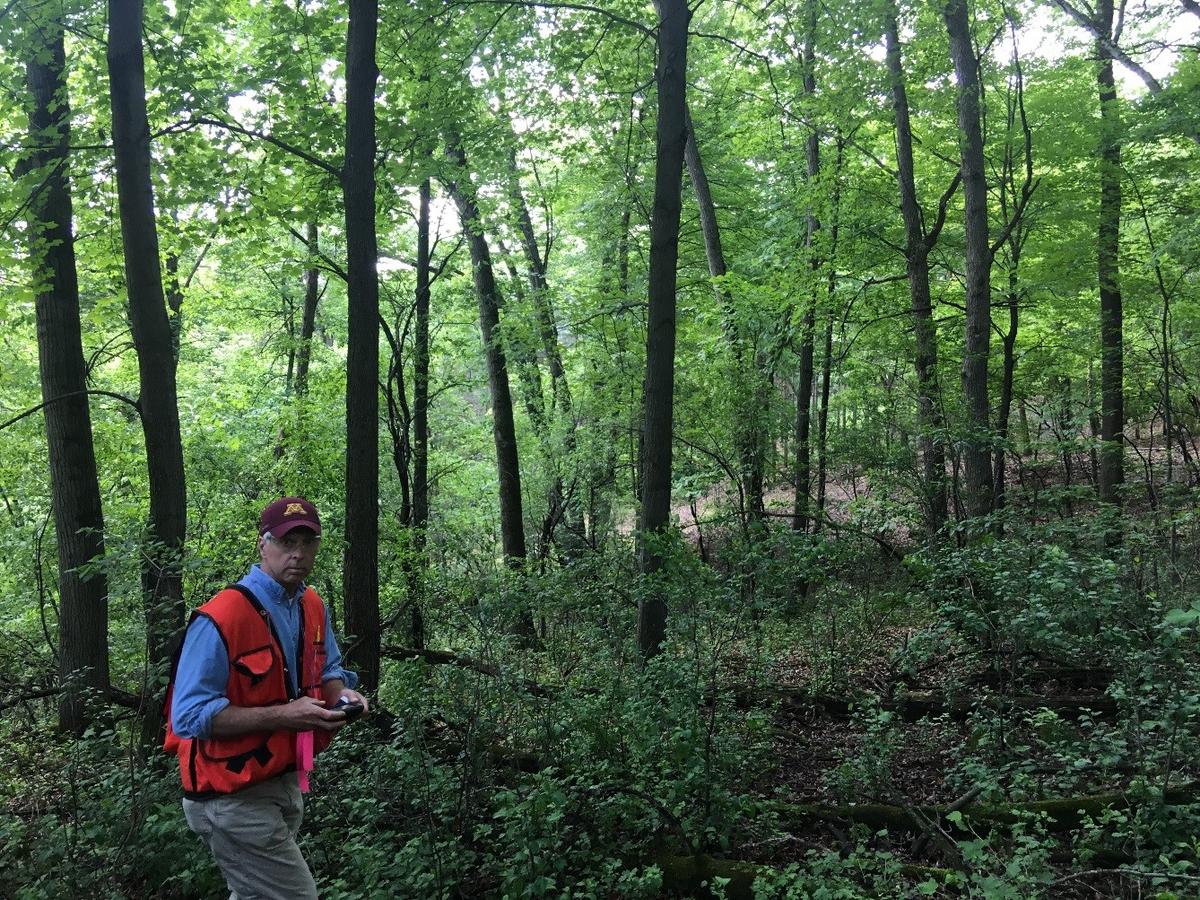Overview
This case study is an assessment of 2019 stand conditions on a site that was treated in 1989 with a unique oak regeneration prescription using mechanical site preparation.
It has been challenging over the years to find practical, affordable cultural methods to consistently regenerate red oak on mesic sites in southeastern Minnesota..
Challenges to consistent oak regeneration establishment include:
- Inconsistent acorn crops
- Relative oak shade intolerance and slow juvenile growth
- Predation of seedlings by deer and other wildlife species
- Difficulty of the use of prescribed fire as a site preparation tool
- It is challenging to accomplish intermediate stand treatments (follow-up stand management practices like release) needed for oak to compete and thrive.
The difficulty in finding practical, consistently effective silvicultural methods to establish northern red oak regeneration led forest managers through the 1970s, 80s and 90s to try several different methods. One of those was the so-called “Bruggeman Method”, named after Arnold Bruggeman, an Iowa and Minnesota logger thought to have pioneered it. The method was brought to the attention of Minnesota DNR foresters at the time by former U.S. Forest Service Silviculturist Rod Jacobs. The method is described below in the “Silvicultural Prescription” section.
This site and project were the subject of a University of Minnesota M.S. Thesis by Forestry graduate student Peter P. Bundy in the early 1990s. The thesis “The Preliminary Effects of Site Disturbance on Northern Red Oak Regeneration” was published in February of 1991. It is available at the College of Food, Agriculture and Natural Resources Science in Green Hall on the St. Paul Campus.
Silviculture Objective(s)
1) Regenerate a mature red oak stand to a young stand of similar composition.
2) Evaluate the success and practicality of the silvicultural prescription described in the “Stand Origin” and “Silviculture Prescription” sections.
3) Improve wildlife habitat.
4) Improve timber quality and value.
Pre-treatment stand description and condition
Stand establishment and management history:
In 1989, the stand was dominated by mature red oak along with some bur oak, paper birch, elm, aspen, birch and basswood. From tree ring counts conducted on stumps in 1990, it was determined that the red oaks averaged 101 years old at harvest. Most of the mature oak stands in southeastern Minnesota of that vintage likely originated after control of regular fires and post European settlement. The stand was part of a privately owned farmstead until the state obtained it in the late 1960s. It had a history of use as a woodlot and wooded pasture prior to the state obtaining the property.
Pre-treatment species composition:
Red oak, with average age of 101 years old was the dominant overstory species in 1989.
Basal area of the stand prior to harvest ranged from 60 to 120 sq. ft./acre. Mean basal area was 92 sq. ft./ acre, and 65% of the overstory was oak. Of the remaining 35% of the overstory, 30 % was in aspen and birch, with very small amounts of boxelder, cottonwood, green ash, basswood and black cherry (Bundy 1991). The birch was distributed as both scattered individual stems, and also a nearly pure patch of about one acre.
Red oak advance regeneration greater than 4.5 feet in height, after mechanical treatment, but before harvest, averaged 34 stems/acre (Bundy 1991).
Oak advance regeneration measured prior to all treatments was estimated at 5,700 seedlings/acre (Bundy 1991). The vast majority of these pre-treatment seedlings were under 1 foot in height.
Pre-treatment growth and stocking:
Table 1: September 1988 timber sale appraisal of total volume of merchantable trees with stems greater than 12 inches DBH
Species Board Feet
- Red Oak 35,300
- Bur and White Oak 2,900
- Paper Birch 4,600
- Miscellaneous Hardwoods 1,000
Pre-treatment forest health issues:
Nothing major, but as is common for stands of its age in southeastern Minnesota, the stand was beginning to experience a modest amount of heart rot. If stands are not treated, they can often begin to experience fairly rapid decline and conversion to more shade tolerant species as they reach 120 to 130 years of age.
Landowner objectives/situation:
While specific objectives vary from parcel to parcel, lands under the administration of DNR-Forestry are managed in alignment with Section Forest Resource Managment Plans (SFRMP) to ensure that state forest management activities meet statewide goals for ecological protection, timber production, and cultural/recreational values. The DNR assembles teams from the Divisions of Forestry, Fish & Wildlife, and Ecological & Water Resources who work with partners and the public to develop SFRMPs.
The Minnesota DNR goal for oak forest acreage at the time of project initiation was to maintain as much of it as possible through regeneration of mature stands.
Site-specific objectives included:
- Regenerate a mature red oak stand to a young stand of similar composition.
- Evaluate the success and practicality of using a unique silvicultural prescription
- Maintain and improve wildlife habitat
- Improve timber quality and value
Silviculture Prescription
The following steps were implemented:
|
Treatment |
Date |
Description |
Acres Treated |
|
Assess advance regeneration |
Summer 1988 |
Approximately 5000 stems of small red oak seedlings were identified in the understory during the summer of 1988. |
NA |
|
Assess acorn crop |
Spring/Summer 1988 |
An abundant acorn crop was identified during the summer of 1988. |
NA |
|
Mechanical site preparation "Bruggeman Method" - Have a small bulldozer travel across the site multiple times with its blade just above ground level |
Mid-October 1988 |
Note: Mechanical site preparation treatment was limited to the flattest 4 acres of the site Have a small bulldozer travel across the site multiple times with its blade just above ground level, with 3 objectives of: i. Controlling competing brush by knocking it over and uprooting it. ii. Improving acorn contact with mineral soil by burying, or partially burying them. iii. Accelerating growth of existing red oak small oak seedlings by breaking off their tops, but keeping disturbance of their root systems to a minimum. |
4 |
|
Clearcut with Reserves harvest |
Late September 1989 |
Harvest to release regeneration. |
9 |
What actually happened during the treatment
In addition to the activities mentioned above, a note in the timber sale file indicates that a small number of red oak seedlings (800 or less) may have been planted on the site in the spring of 1989.
It is also likely that post-sale killing of the few stems of competing undesirable trees such as boxelder and elm by girdling the stems and applying herbicide to the girdle wounds was done, since this was a very common practice. However, the Peter Bundy thesis seems to indicate that competing tree stems from 5 to 10 inches DBH were left untreated so we can’t be sure.
Finally, there are remnants of a few “treeshelters” on the site, indicating that a few of these were installed on natural or planted regeneration.
Unfortunately, detailed records of any of these three practices has been lost in the Division of Forestry transition between several silvicultural information data systems over the past 30 years.

Figure 1: Fall 1989 photograph of bulldozer treated area (left) and non-treated area (right).
Post-treatment assessment
Stand condition in 2019 for the entire nine acres is a 30 year old, high quality central hardwood stand with a significant red oak component. Therefore all silvicultural objectives were achieved for all nine acres of the stand.
Table 2: Basal area (ft2), relative basal area (RBA, %), and frequency (% of plots) of stems greater than 5” DBH in 2019
Species BA (ft2/ac) RBA (%) Frequency (%)
Red oak 26.7 49% 93%
Basswood 8.5 16% 52%
Aspen 4.8 9% 19%
Black cherry 3.3 6% 22%
Bur oak 2.6 5% 19%
American elm 2.2 4% 22%
Hackberry 1.1 2% 7%
Paper birch 1.1 2% 11%
Butternut 0.4 1% 4%
White oak 0.4 1% 4%
Black walnut 2.6 5% 7%
Total BA 54.1
Mechanical Site Preparation Results
First, a note of caution about assessing the mechanical site preparation results: Unfortunately, GPS technology was not available for our use at the time of project initiation, and none of the location markers that were established appears to have survived the 28 years since the last regeneration plots for the project were taken. This means that it is not possible to now definitively re-locate exact boundaries of the treatment areas. However, use of maps produced during the project, and also knowledge that the bulldozer only operated on the flattest 4 acres of the site, enabled us to delineate treated vs. untreated area with what we think was reasonable, if imperfect, accuracy. It is important to be mindful of this as results are examined.
While the four acres of mechanical site preparation treatment appears to have had several effects, none of them seems to have significantly impacted red oak regeneration success on this site after 29 years, compared to untreated portions of the stand.
Bottom line is that we found no major differences between bulldozed and non-bulldozed areas in establishment success for red oak twenty nine years after treatment.
Most of the nine acre stand now contains a good component of red oak greater than 5 inches DBH. There is little difference in 5“-plus DBH red oak basal area between treated and untreated areas. Also, frequency with which we found red oak in plot samples was similar, thus red oak was well distributed through the site in both bulldozed and non-bulldozed areas. The bulldozed areas did have greater aspen basal area and frequency than the non-treated areas, but this could be a function of landscape position and location of aspen before harvest rather than treatment differences, as aspen tends to occur near the tops of the hills rather than at the bottom. Overall, there was similar tree species composition and basal area between treated and untreated sites; there were some minor differences, which we can’t say are significant or not. Cherry may have done slightly better in the non-bulldozed area but that could be related to sampling effort (8 plots in the bulldozed area vs. 19 plots in the non-bulldozed area).
Table 3: Basal area (ft.2/ac), relative basal area (RBA, %) and frequency (% of plots) of overstory trees (DBH > 5 in) by DBH class in 2019
Bulldozed (8 plots) Non Bulldozed (19 plots)
Spp by DBH class (in) BA (ft2/ac) RBA (%) Freq (%) BA (ft2/ac) RBA (%) Freq (%)
Red Oak (5-10) 15.0 29 75 15.8 29 74
Red Oak (10-15) 2.5 5 25 8.4 15 53
Red Oak (15-20) 2.5 5 25 2.6 5 26
Red Oak (20+) 1.3 2 13 2.1 4 16
Black cherry (5-10) 1.3 2 13 4.2 8 26
Hackberry (5-10) 0.0 0 0 1.6 3 11
American elm (5-10) 2.5 5 25 2.1 4 21
Butternut (5-10) 1.3 2 13 0.0 0 0
Basswood (5-10) 6.3 12 38 7.9 14 53
Basswood (10-15) 0.0 0 0 1.6 3 11
T. Aspen (5-10) 11.3 22 25 1.6 3 11
T. Aspen (10-15) 1.3 2 13 0.0 0 0
Paper birch (5-10) 1.3 2 13 0.5 1 5
Paper birch (10-15) 1.3 2 13 0.0 0 0
Bur oak (10-15) 0.0 0 0 1.1 2 5
Bur oak (15-20) 0.0 0 0 0.5 1 5
Bur Oak (20+) 3.8 7 25 0.5 1 5
White oak (5-10) 0.0 0 0 0.5 1 5
Apple (5-10) 0.0 0 0 0.5 1 5
Black walnut 0.0 0 0 3.7 7 11
Total BA 51.3 55.3
The main story of this case study is in trees that are over 5” DBH shown in table 3 above. However, the cohort of three to 5 inch DBH trees is also important, since some of them are codominant. A summary table of average stem density and frequency of these trees are below (Table 4).
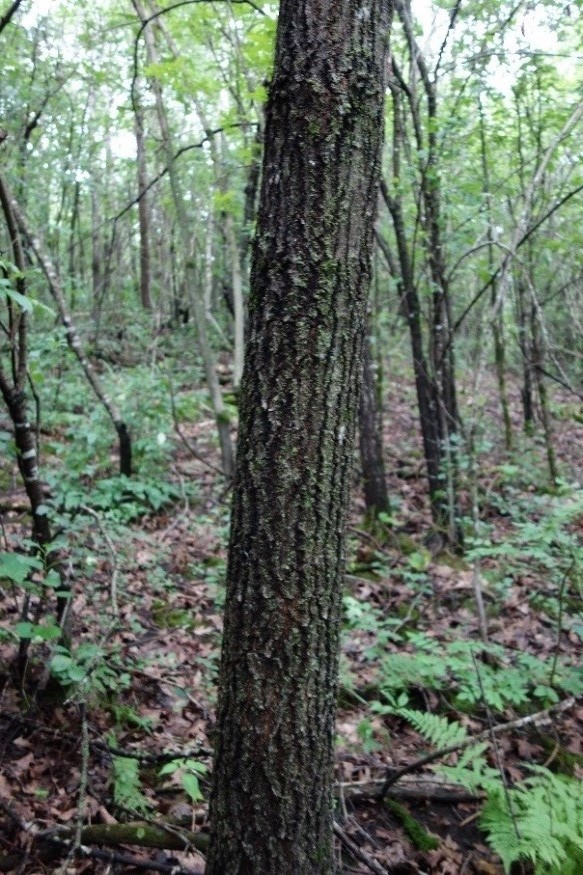
Figure 2: Red oak stem in 2019. 29 years old, approximately 7 inches DBH.
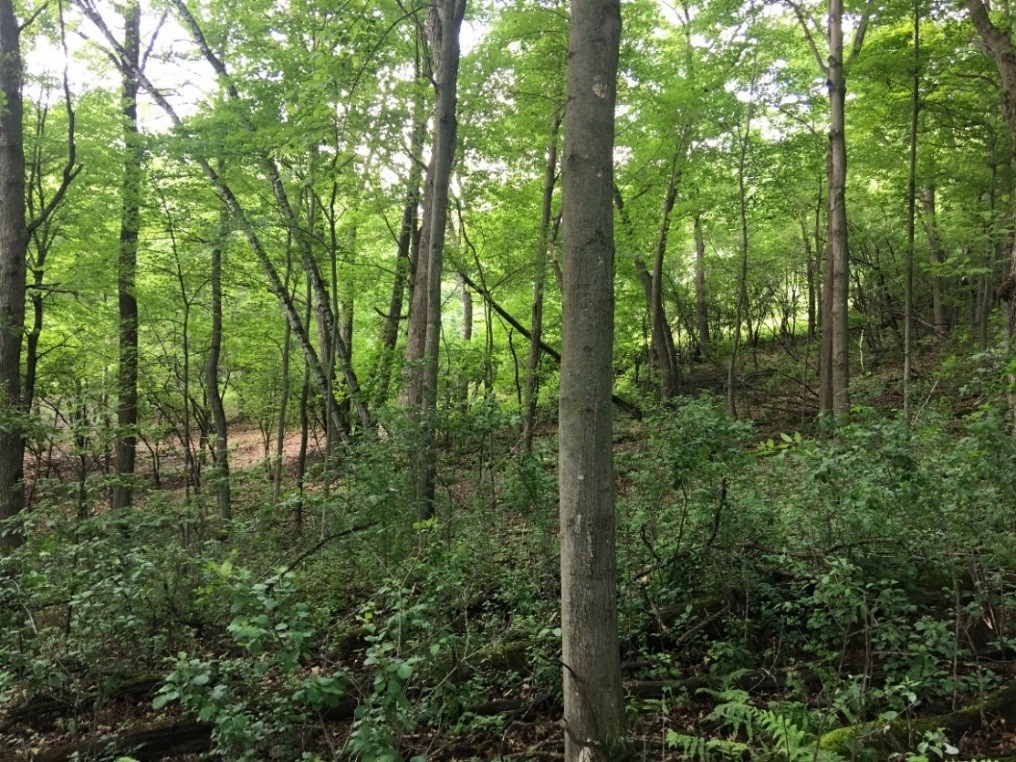
Figure 3: A view of the stand and understory in 2019. Mixed tree species are present, including red oak, basswood, cherry, and aspen. Buckthorn is observable in the understory.
The non-bulldozed area has slightly greater red oak density and frequency than the bulldozed area in the 3-5 inch DBH class. However, basswood, black cherry, paper birch, and aspen have greater density and frequency in the bulldozed area. One difference to note is that 3-5 inch buckthorn did better in the bulldozed area than in the non-bulldozed area. However there is slightly more smaller diameter buckthorn (1-3 inch DBH), in the bulldozed area compared to non-bulldozed (241 stems/ac vs 395 stems/ac, respectively). It is not possible at this point to say with certainty if differences are due more to the bulldozing treatment, or to other factors such as topography or pre-existing vegetation differences prior to treatment, or to a combination of all of those factors. Regardless of which treatment had more buckthorn and at what size class, there was still a high density of buckthorn throughout the site (data not shown). It should also be noted that high buckthorn densities are common in the Hay Creek area
Table 4: Sapling and small tree regeneration density (ave stems/acre) and frequency (% plots present) in 2019
Small trees (3-5 in DBH)
bulldozed non bulldozed
Species density frequency density frequency
Red Oak 25 25% 63 42%
American elm 25 25% 26 26%
Basswood 100 63% 47 37%
Black cherry 63 38% 26 26%
Paper birch 38 13% 5 5%
T. aspen 25 25% 5 5%
White oak 0 0% 5 5%
Green ash 0 0% 11 5%
Red maple 0 0% 5 5%
Buckthorn 63 25% 11 11%
Plant Diversity and Invasive Species Observations
In terms of plant diversity, we found 69 plant species in 1024 m2 (~0.25 acre) plot. Six of these were introduced species and included buckthorn (Rhamnus cathartica), oriental bittersweet (Celastris orbiculatus), European high-bush cranberry (Viburnum opulus), Tatarian honeysuckle (Lonicera tatarica), common dandelion (Taraxacum officinale), and heal-all (Prunella vulgaris). Many of the plants we found at our site are commonly found in MHs37 and other Mesic Hardwood sites in the Blufflands subsection and included plants like Two-leaved miterwort (Mitella diphylla), maidenhair fern (Adiantum pedatum), and red baneberry (Actaea rubra) that indicate shady, rich sites.
The buckthorn density was very high at this site (especially in sizes below 3 inches DBH) but we should note that high buckthorn densities are common in the Hay Creek area. We found oriental bittersweet on this site. It’s incredibly difficult to identify oriental bittersweet from the native bittersweet and we were not sure if we had the native, the exotic, or both. We do know that there are a few infestations of oriental bittersweet in the Hay Creek Unit. The oriental bittersweet, if present, could harm both the young crop trees and the integrity of the forest. So, determining which species we have is something we plan to do in the near future. Lastly, while not captured in our species area plot, we did find a small amount of garlic mustard (Alliaria petiolata). Invasive species will all be monitored, with control actions taken as needed.
Plans for future treatments
Monitor the stand through periodic inventory surveys. Design and execute further timber stand improvement and/or invasive species control efforts if needed.
Monitor and control high priority invasive species.
Costs and economic considerations
Costs (1989 Dollars)
- Mechanical site preparation with bulldozer 1989: $192/ac (Includes cost for forester oversight)
- Post-sale killing of competing undesirable trees 1990: $ 75/ac (estimated)
- TOTAL COSTS $ 267/ac
Revenue (1989 Dollars)
- Harvest on 9 acres (1989) $6,001 on 9 acres
- TOTAL REVENUE: $ 667/ac
- NET REVENUE: +$ 400/ac
Other notes
Literature Cited:
Bundy, P. (1991). The Preliminary Effects of Site Disturbance on Northern Red Oak Regeneration.
Summary / lessons learned / additional thoughts
Since almost the entire nine acre harvest area (including both bulldozed and unbulldozed portions) has a good component of red oak, it seems likely that the three biggest factors in success of oak establishment on this site were:
- Sufficient advance regeneration - Identification of large numbers of small seedlings in the understory prior to harvest
- A bumper acorn crop - Identification of a good acorn crop during the fall prior to harvest
- The type and timing of the harvest - A clearcut with reserves harvest in the late fall (or winter) after acorn drop
The treatment produced a diverse, well-stocked stand of high quality stems of desirable hardwood species (including a good component of red oak) that fit the site well.
Some observations on the bulldozing site preparation technique ("Bruggeman Method"):
While the mechanical site preparation on four acres does not appear to have had an appreciable impact either way on the success of red oak establishment and growth after 29 years on this site, there are still some things about it worth noting.
Observations from Peter Bundy’s M.S. Thesis:
The bulldozing treatment ("Bruggeman Method") looked promising after two years: Results for numbers of red oak seedlings over one foot in height after two growing seasons from Peter Bundy’s M.S. thesis are that treated plots contained a greater number of red oak seedlings taller than one foot in height than untreated plots. The treated area averaged 480 red oak seedlings greater than one foot in height, compared to 240 per acre in the untreated plots. Peter postulated 2 reasons for this result:
- The bulldozing broke off stems of advance red oak regeneration, resulting in their resprouting and rapid juvenile growth over the next several years
- It also set back competing understory vegetation, including buckthorn and other shrubs by uprooting many of them from the ground
Timing of bulldozing is important. There were fewer acorns present in bulldozed areas than non-bulldozed in the spring following treatment. One recommendation from Peter Bundy’s M.S. thesis was to time the site preparation work before leaf-drop if possible. The timing of the bulldozer work after most leaves had dropped seems to have resulted in fewer leaves to cover acorns and provide protection from animal predation and desiccation. Challenges with forester and contractor availability and schedules, and weather would make this recommendation difficult to achieve, but would be a worthy goal if the technique was tried again.
Forester observations:
Bulldozing site prep has serious limitations, but may still have value on some sites. While the impacts of the bulldozing to red oak establishment on this site appear insignificant, foresters have observed other instances in southeastern Minnesota and adjacent landscapes where the technique worked well. Therefore it would be a mistake to completely remove the technique as an option in a forester’s toolbox, under favorable conditions.
Limitations to widespread use of the bulldozing site preparation technique are significant. The three most serious limitations are:
- Timber sale timing – it is not possible to do all sales on sites with good advance seedling numbers, and/or in the fall after a good acorn crop year.
- Slope limitations - the method is difficult to accomplish on steep sites or steep portions of sites. For this site, the bulldozer operator was unable to treat portions of the site with greater than roughly 15 to 20% slopes.
- Expense - bulldozing adds expense to regeneration costs.
These factors definitely limit the acreage where the technique could be used. However for relatively flat sites, where there is sufficient flexibility and control over timber sale timing, it could still be a red oak regeneration option in a Forester’s toolbox.
Observations on buckthorn:
Regeneration plots taken in 2019 indicate around 60,000 stems/acre of buckthorn are present. The large majority of stems are under 2 feet in height, but there are patches of stems over 15 to 20 feet in height. It is interesting to note that while there is currently a heavy crop of buckthorn in the understory and that this is far from desirable, it did not prevent adequate regeneration of oak on much of this site.
Unfortunately, no records of pre-treatment buckthorn stem numbers can be found. Buckthorn was not yet a well understood threat to forests at the time the project was done. However, recollections of the forester that administered the project are that a heavy crop of young buckthorn and raspberry was present after harvest. While this competition was a cause for concern at the time, the current stand conditions indicate that enough red oak and other desirable hardwood species were able to grow through the competition and become established. It is difficult to know exactly why that happened here, when it is definitely not the case on many other mesic sites with heavy post-harvest shrub competition. One possibility is that the exceptionally high numbers of pre-treatment oak regenerants, along with a bumper acorn crop in 1988 just prior to treatment, resulted in so many stems of regeneration that an adequate number of them were in microclimate conditions that enabled their survival.
Supplemental Content
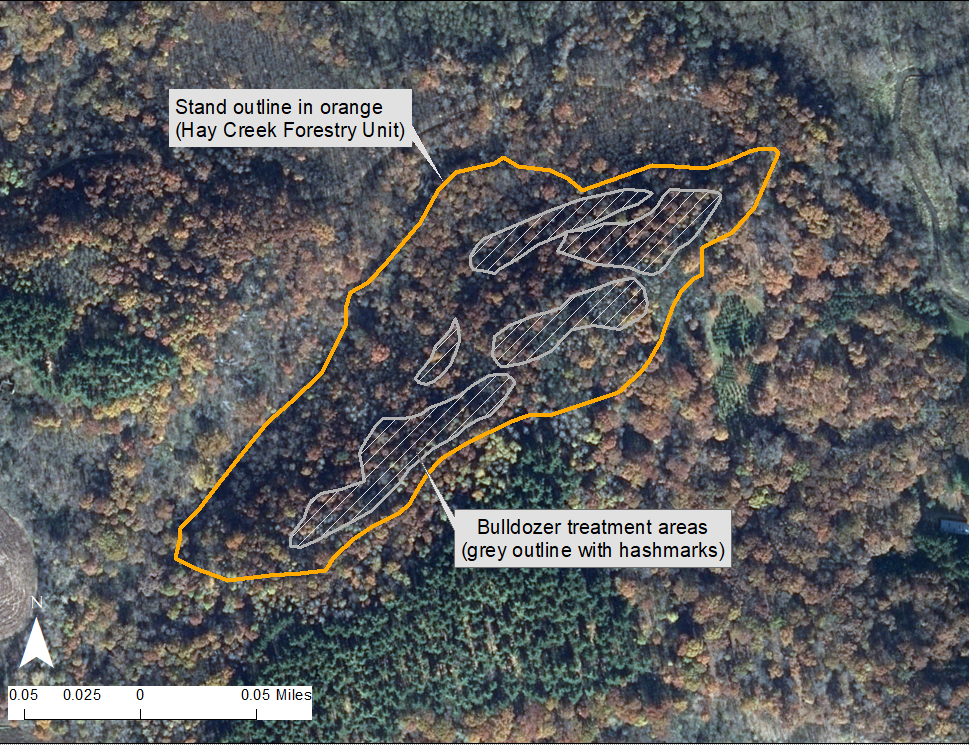
Approximate stand boundary and bulldozed areas on 2018 aerial photo.
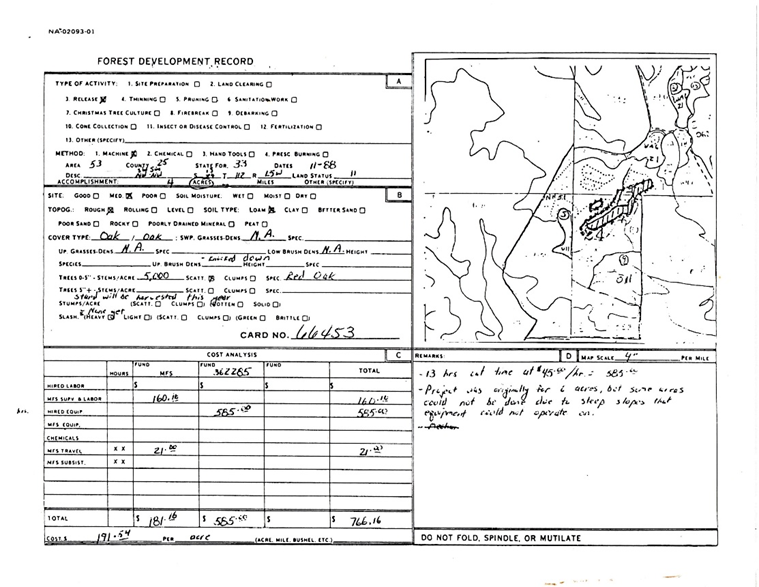
Bulldozer site prep development record.
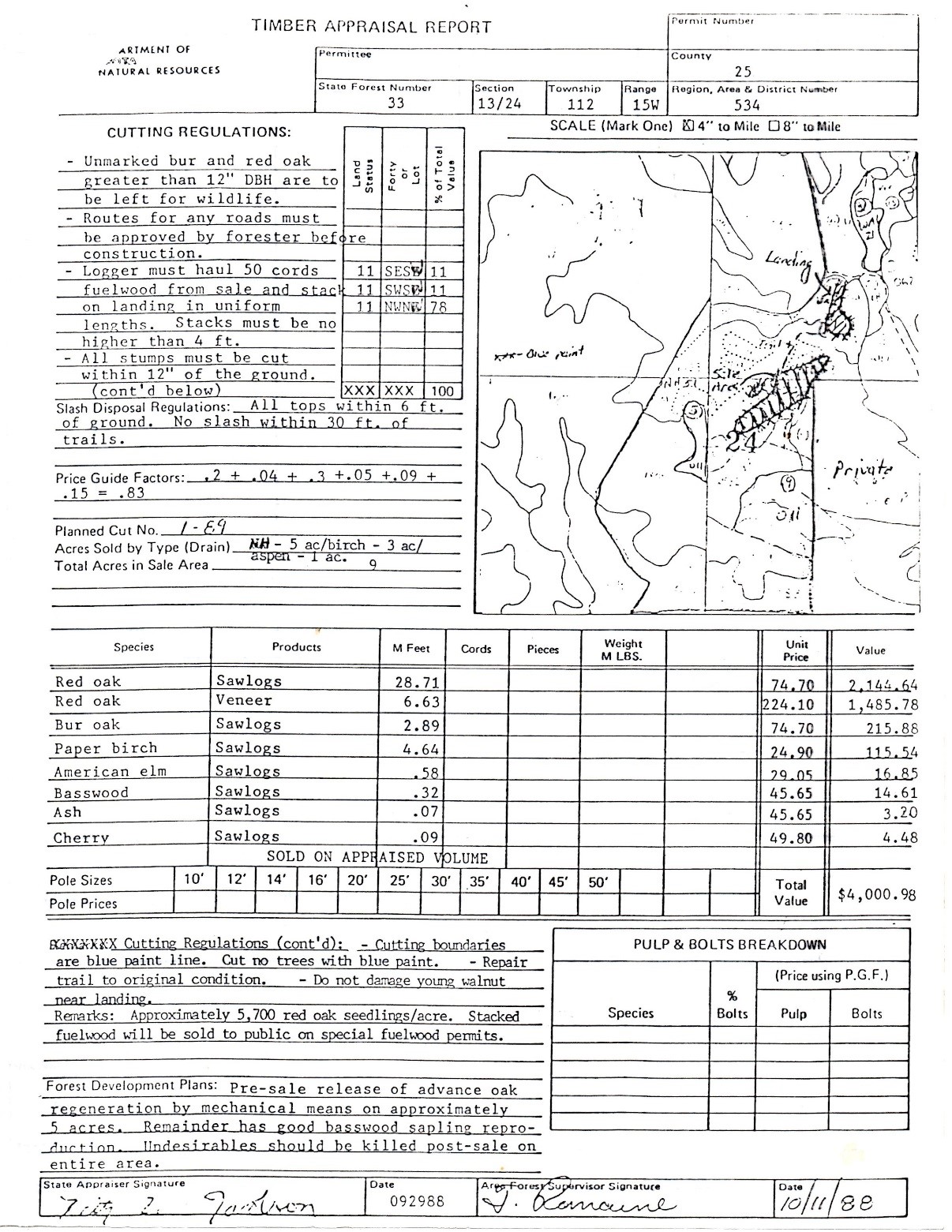
1988 timber sale appraisal.
